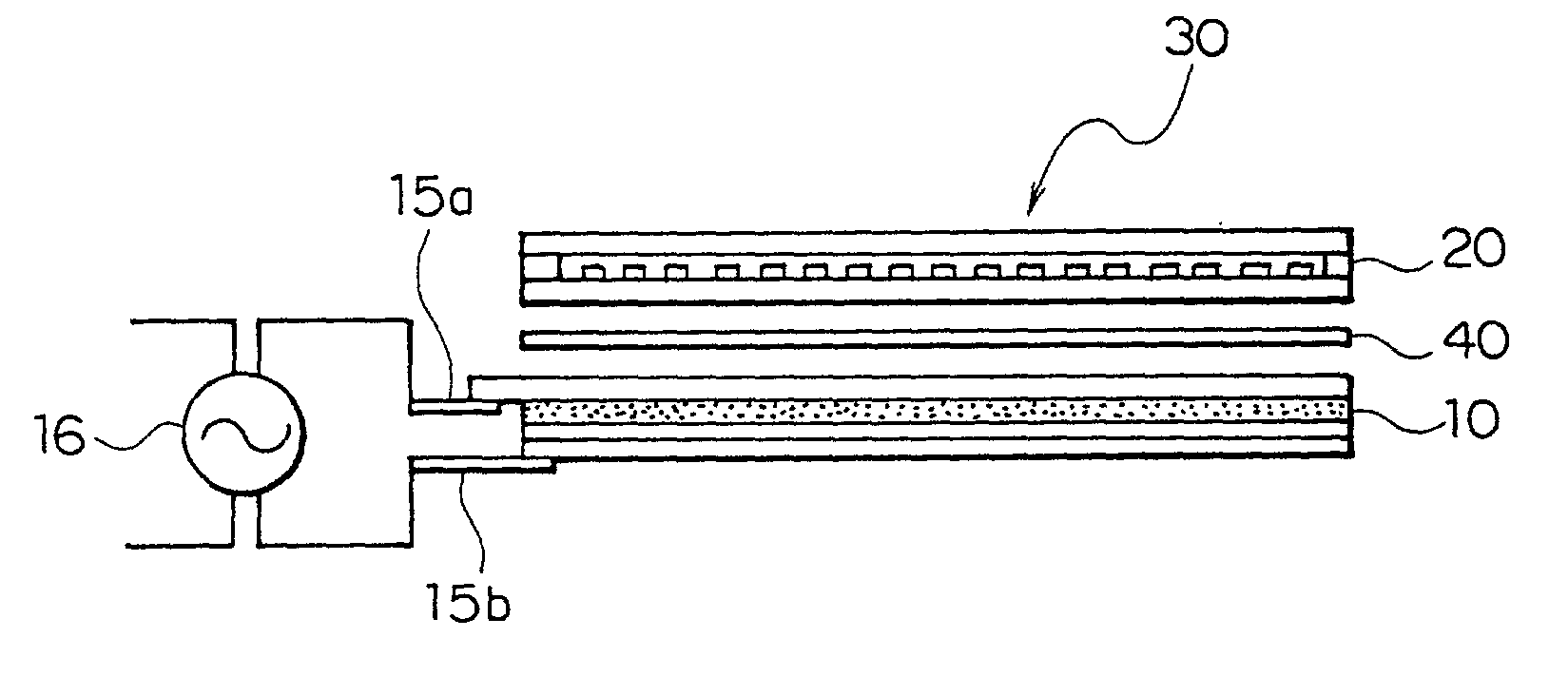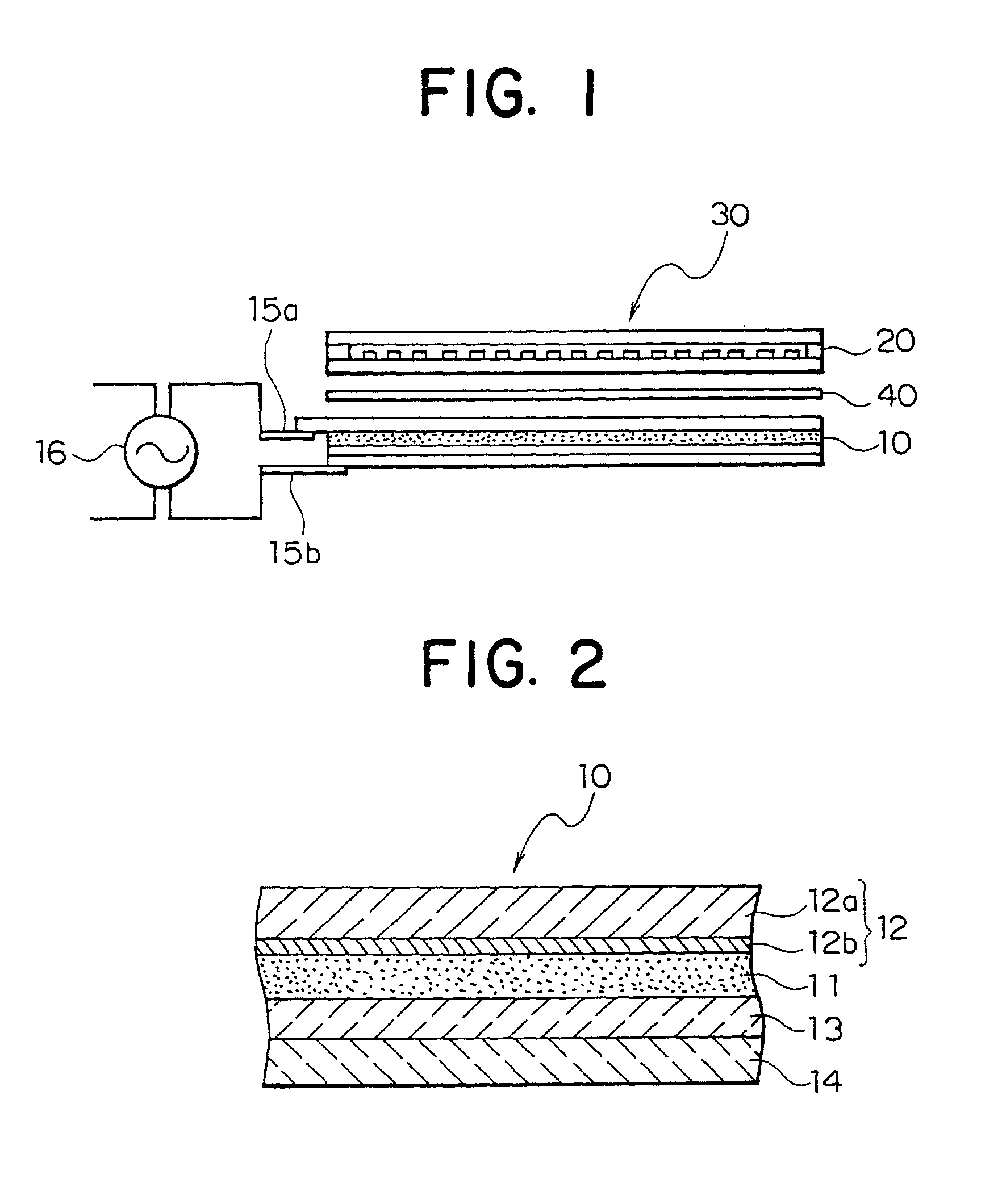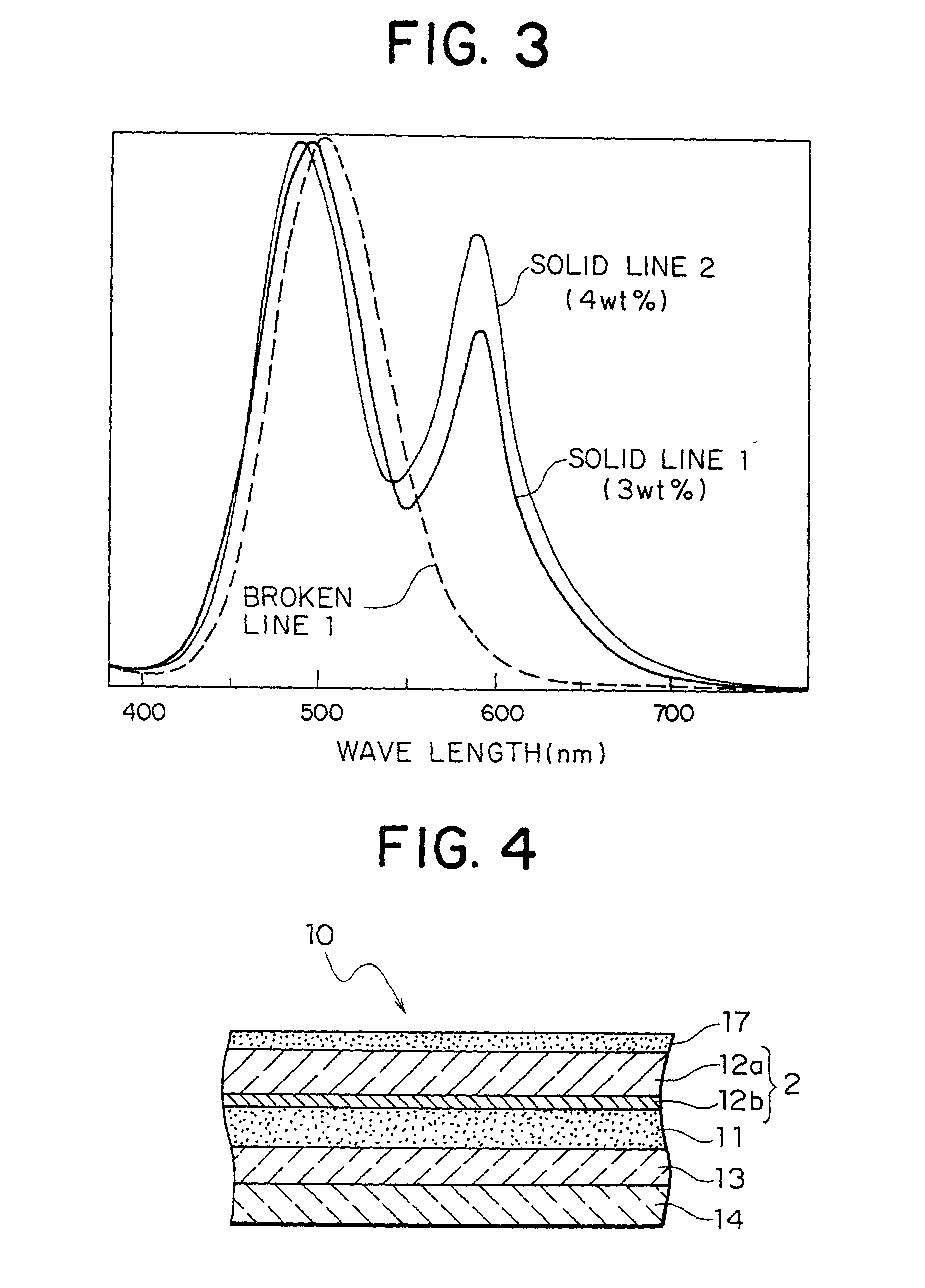Backlight for color liquid crystal, color liquid crystal display device, and EL element for backlight of color liquid crystal device
a color liquid crystal display device and backlight technology, which is applied in the direction of instruments, discharge tube luminescnet screens, static indicating devices, etc., can solve the problems of large installation space, large power consumption, and inability to be used as the display portion of portable information terminals such as pda's and portable telephones
- Summary
- Abstract
- Description
- Claims
- Application Information
AI Technical Summary
Benefits of technology
Problems solved by technology
Method used
Image
Examples
embodiment 2
[0070] First, 99.5 mass percent of the same blue green emitting ZnS: Cu phosphor powder with Embodiment 1 and 0.5 mass percent of rhodamine group fluorescent pigment, a red fluorescent pigment, are mixed. The above mixture is dispersed in fluororubber together with an appropriate amount of organic solvent to prepare slurry. Then, on a transparent electrode film that is formed by depositing an ITO film on a polyester film, the aforementioned phosphor slurry is screen-printed to form a light-emitting layer of a thickness of 50 .mu.m.
[0071] Next, on the aforementioned light-emitting layer, by the use of an ordinary method, a reflective insulating layer and a rear electrode layer are stacked in turn. Thereafter, a fluorescent pigment layer containing 3 mass percent of rhodamine group fluorescent pigment with respect to the phosphor powder of the light-emitting layer is printed on the transparent electrode layer to form a color filter layer. Thus obtained bare EL element has a luminous e...
embodiment 3
[0072] First, 99 mass percent of blue emitting ZnS: Cu phosphor powder with moisture-proof film consisting of alumina film and 1 mass percent of rhodamine group fluorescent pigment, a red fluorescent pigment, are mixed. The above mixture is dispersed in fluororubber together with an appropriate amount of organic solvent to prepare slurry. Then, on a transparent electrode film that is formed by depositing an ITO film on a polyester film, the aforementioned phosphor slurry is screen-printed to form a light-emitting layer of a thickness of 50 .mu.m.
[0073] The ZnS: Cu phosphor used here contains 0.05 mass percent of Cu with respect to ZnS, and has, under the operational conditions of a voltage of 100 Vrms and a frequency of 400 Hz, emission brightness of 102 cd / m.sup.2 and chromaticity of (0.179, 0.35) by the CIE chromaticity coordinate. The brightness and chromaticity of the ZnS: Cu phosphor are measured based on the aforementioned method.
[0074] Next, on the aforementioned light-emitti...
embodiment 4
[0075] 49.5 mass percent of the same blue green emitting ZnS: Cu phosphor powder with Embodiment 1, 49 mass percent of the same blue emitting ZnS: Cu phosphor powder with Embodiment 3 and 1.5 mass percent of rhodamine group fluorescent pigment, a red fluorescent pigment, are mixed. The above mixture is dispersed in fluororubber together with an appropriate amount of organic solvent to prepare slurry. Then, on a transparent electrode film that is formed by depositing an ITO film on a polyester film, the aforementioned phosphor slurry is screen-printed to form a light-emitting layer of a thickness of 50 .mu.m.
[0076] Next, on the aforementioned light-emitting layer, according to an ordinary method, a reflective insulating layer and a rear electrode layer are stacked in turn. Thereafter, a fluorescent pigment layer containing 5 mass percent of rhodamine group fluorescent pigment with respect to the phosphor powder of the light-emitting layer is printed on the transparent electrode layer...
PUM
| Property | Measurement | Unit |
|---|---|---|
| brightness | aaaaa | aaaaa |
| frequency | aaaaa | aaaaa |
| brightness | aaaaa | aaaaa |
Abstract
Description
Claims
Application Information
 Login to View More
Login to View More - R&D
- Intellectual Property
- Life Sciences
- Materials
- Tech Scout
- Unparalleled Data Quality
- Higher Quality Content
- 60% Fewer Hallucinations
Browse by: Latest US Patents, China's latest patents, Technical Efficacy Thesaurus, Application Domain, Technology Topic, Popular Technical Reports.
© 2025 PatSnap. All rights reserved.Legal|Privacy policy|Modern Slavery Act Transparency Statement|Sitemap|About US| Contact US: help@patsnap.com



